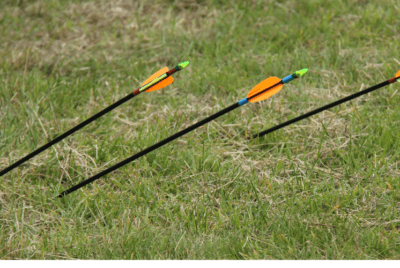Recurve vs Compound Bow: Choosing the Right Bow for Your Archery Adventure
"We may earn a commission for purchases made using our links. Please see our disclaimer to learn more."
I understand the excitement and confusion that comes with choosing the right bow. The market offers a wide range of options, but two popular choices among archers are recurve bows and compound bows. In this article, I will guide you through the features and benefits of the recurve vs compound bow, helping you make an informed decision based on your needs and preferences.
Understanding Recurve Bows
What is a recurve bow?
A recurve bow is a traditional bow with limbs that curve away from the archer when the bow is unstrung. This design gives the bow more power and energy compared to a straight-limbed bow. Recurve bows have been used for centuries and are often associated with traditional archery.

Advantages of recurve bows
Recurve bows have several advantages that make them popular among archers. Firstly, they offer a smooth shooting experience and can generate high arrow speeds. The recurve design allows for efficient transfer of energy, resulting in powerful shots. Secondly, recurve bows are lightweight and portable, making them suitable for hunting or outdoor activities. Finally, recurve bows provide archers with a traditional and aesthetic appeal, attracting those who appreciate the heritage of archery.
Disadvantages of recurve bows
Despite their advantages, recurve bows have some limitations. One notable drawback is that they require more skill and practice to shoot accurately compared to compound bows. The absence of additional accessories and technological advancements can make it challenging for beginners to achieve consistent accuracy. Additionally, recurve bows have a lower let-off, meaning the archer needs to hold more weight at full draw, which can be tiring for some individuals.
Understanding Compound Bows
What is a compound bow?
A compound bow is a modern bow that uses a system of pulleys and cables to reduce the amount of force required to hold the bow at full draw. This design feature is known as the let-off and allows archers to aim and hold the bow for longer periods with less fatigue. Compound bows are widely used in target archery, hunting, and competitive shooting.

Advantages of compound bows
Compound bows offer several advantages that make them popular among archers of all skill levels. The let-off feature is one of the most significant advantages, as it allows archers to hold the bow steady and aim accurately without straining their muscles. Additionally, compound bows are highly adjustable, allowing archers to customize draw length, draw weight, and other settings to suit their individual needs. Compound bows are also known for their high arrow speeds and excellent accuracy, making them ideal for competitive archery.
Disadvantages of compound bows
Despite their numerous benefits, compound bows have a few drawbacks. One of the main considerations is their complexity. The pulley system and additional accessories make compound bows more intricate to maintain and tune compared to recurve bows. This complexity may require professional assistance or a learning curve for beginners. Additionally, compound bows tend to be heavier and bulkier than recurve bows, which can be a factor to consider for those who prioritize portability or maneuverability.
Key Differences Between Recurve vs Compound Bows
To make an informed decision, it’s important to understand the key differences between recurve vs compound bows. Let’s explore these differences in more detail.
Design and Construction
Recurve bows have a simpler design, consisting of a curved riser and limbs. They are usually made from wood, fiberglass, or carbon. On the other hand, compound bows feature a more complex construction with pulleys, cables, and a cam system. They are often made from lightweight materials such as aluminum or carbon fiber.
Power and Speed
Compound bows have a distinct advantage in terms of power and speed. The cam system and let-off feature enable archers to hold more draw weight, resulting in higher arrow speeds. Recurve bows, while still capable of generating significant power, generally have lower arrow speeds compared to compound bows.
Accuracy and Forgiveness
Compound bows are known for their exceptional accuracy. The combination of a stabilizer, sight, and release aid, along with the let-off feature, helps archers achieve consistent and precise shots. Recurve bows require more practice and skill to attain the same level of accuracy but can still deliver impressive results in the hands of a skilled archer.
Maintenance and Adjustability
Compound bows often require more maintenance and adjustment due to their intricate design. The pulleys, cables, and cams need regular inspection and tuning to ensure optimal performance. Recurve bows, with their simpler construction, are generally easier to maintain and adjust.
Factors to Consider When Choosing Between Recurve Vs Compound Bows
Now that we’ve explored the differences, let’s consider the factors that should influence your decision when choosing between recurve vs compound bow.
Skill Level and Experience
If you’re a beginner or relatively new to archery, a recurve bow might be a better starting point. Recurve bows offer a more traditional and challenging shooting experience, helping you develop proper form, technique, and consistency. As you gain proficiency and experience, you can consider transitioning to a compound bow for its additional features and advantages.
Purpose and Intended Use
Consider your intended use for the bow. Are you interested in target shooting, hunting, or competitive archery? Compound bows excel in accuracy, power, and adjustability, making them a popular choice for competitive archers and hunters. Recurve bows, on the other hand, are well-suited for traditional archery, recreational shooting, and those who appreciate simplicity and elegance.
Budget
Budget plays a crucial role in your decision-making process. Generally, compound bows tend to be more expensive due to their advanced features and technology. Recurve bows, especially entry-level options, are often more affordable. However, keep in mind that additional accessories and upgrades may incur additional costs for both types of bows.
Personal Preference
Ultimately, your personal preference should guide your decision. Consider factors such as the shooting experience, aesthetics, and the type of archery that resonates with you. Trying out both types of bows, if possible, can help you determine which feels more comfortable and enjoyable for you.
Recurve vs Compound Bow – Which Bow Should You Choose?
Based on the factors discussed, let’s explore some recommendations for different types of archers.
Beginner Archers
For beginners, starting with a recurve bow is often a wise choice. It allows you to focus on developing proper form, technique, and muscle memory. Recurve bows provide a challenging but rewarding experience, helping you build a solid foundation as an archer. As you progress and gain confidence in your skills, you can consider transitioning to a compound bow if you’re interested in exploring more advanced features and technologies.
Traditional Archers
If you appreciate the heritage and simplicity of archery, and your primary focus is traditional shooting or recreational target shooting, a recurve bow is the perfect fit. Recurve bows offer a connection to the roots of archery and can provide a satisfying and nostalgic experience.
Competitive Archers
If you have aspirations of competitive archery or are already actively participating in competitions, a compound bow is highly recommended. The precision, accuracy, and adjustability of compound bows give you an edge in terms of consistency and performance. The let-off feature allows you to hold the bow steady for longer periods, enhancing your ability to aim and shoot with accuracy.
Conclusion
Choosing between a recurve vs compound bow depends on your skill level, purpose, budget, and personal preferences. Recurve bows offer a traditional, challenging shooting experience and are suitable for beginners and traditional archers. Compound bows, with their advanced features and technology, provide exceptional accuracy and adjustability, making them ideal for competitive archers and hunters.
Ultimately, the decision comes down to what feels right for you as an archer. Trying out different bows, seeking advice from experienced archers, and considering your goals and shooting style will help you make an informed choice.
FAQs
Q1: Are recurve bows suitable for hunting?
Yes, recurve bows can be used for hunting. However, they require more skill and practice to shoot accurately at longer distances. It’s important to choose an appropriate draw weight and familiarize yourself with the limitations of recurve bows for hunting.
Q2: Can I use a compound bow for recreational shooting?
Absolutely! Compound bows are versatile and can be used for recreational shooting as well. The adjustable features and let-off make them enjoyable for various shooting activities, including casual target shooting.
Q3: Do I need to invest in additional accessories for my compound bow?
While a compound bow can be used with minimal accessories, adding certain accessories like a sight, stabilizer, release aid and quiver can enhance your shooting experience and accuracy. Consider your specific needs and shooting goals before investing in additional accessories.
Q4: How often should I maintain my compound bow?
Regular maintenance is essential for optimal performance of a compound bow. It’s recommended to inspect and tune your bow at least once a year, or more frequently if you shoot regularly. This includes checking the string and cables, inspecting the cams, and ensuring proper alignment.
Q5: Can I switch from a recurve bow to a compound bow later on?
Yes, you can switch from a recurve bow to a compound bow as you progress in your archery journey. It’s important to familiarize yourself with the different shooting techniques and adjust to the technological advancements and features of compound bows. Seeking guidance from experienced archers or coaches can help ease the transition.
Remember, choosing the right bow is a personal decision that should align with your goals, shooting style, and preferences. Enjoy the process of exploring the world of archery and find the bow that brings you joy and fulfillment in your archery journey.






